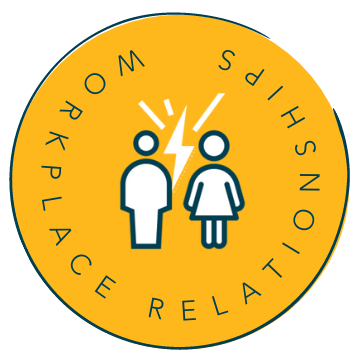
Successfully embedding our culture strategy requires engagement and connection of the people at ground level to the initiatives at the senior leadership level and this can sometimes feel like a big task.
Without putting all of the steps required between the two groups, it may be impossible to bridge the gap between what management say we do, and what we actually do.
At the ground level, that means getting people engaged and involved in helping to drive the message that workplace mental health and wellness is important to us.
A key aspect of embedding wellness as part of the culture is giving people an opportunity to participate, contribute ideas, discuss and tease out things that are of value and feel important for them.
It can be valuable to create mechanisms for people to influence programs or approaches to improve health and wellness within the business.
The types of programs that are often considered valuable are: discounted gym memberships, fitness classes; a weekly supply of fresh fruit, healthy vending in the tearoom; creation of a social club; access to financial planning advice; engaging in work environment beautification.
While initiatives like these have been commonly adopted, there is mixed evidence that such interventions have much impact overall. Initiatives such as these are reactionary, and in implementing them we’re addressing lag indicators to workplace wellness.
The initiatives on their own may provide some small value to individuals, however if we just focus our attention here and we don’t have committed and constructive leadership, or a strong culture strategy, or participation and engagement at the ground level, then these things will not make a real difference to wellness at our workplace.
On the other hand, when we address the work-related factors — the root causes of workplace mental health and take a systems-level approach to addressing these, we get can get ahead of the problems. We can do this by implementing approaches where positive change can be created.
A great example of this would be: implementing a culture survey to understand the key issues faced by staff at all levels of the organisation; then running facilitated workshops or focus groups with all staff in a range of settings to unpack the survey results; and then developing action plans to tackle the issues identified.
Where an employee is already suffering some level of depression, any wellness initiatives we offer will possibly help support them. However, it’s work we're doing at the top levels, around constructive and committed leadership, and culture and connection that may actually prevent someone from ending up being depressed in the first place.
It is important that we don't see the goal of these initiatives to be to “fix wellness”, but to engage people in the fact that wellness matters. If we don’t first do the work to develop participative leadership capabilities, and define our culture strategy, these initiatives will not make the difference on their own.
The value comes from the collaboration and ownership of these wellness initiatives at the ground level when these fit within a larger framework aimed at addressing work related factors known to negatively impact mental health and wellness.
A 2018 review paper examining the Effectiveness of Physical Activity interventions in office-based workplace settings, found that:
“The evidence around the benefits of physical activity in promoting wellbeing are widely accepted; however, the link between physical activity interventions and wellbeing across workplace settings is poorly evidenced.”
“All intervention types were able to elicit some improvement in wellbeing vs control group with no active placebo; therefore, the evidence can only conclude that something is better than nothing.”
Therefore, while there may be some small benefit to be gained following the implementation of these sort of wellbeing initiatives, the true value lies in how they are introduced and indicates that efforts to encourage collaboration and ownership of these initiatives from the outset, is where our main focus should lie (1).

Before introducing these type of wellness initiatives, we need to ensure that we have:
constructive and committed leadership in place
developed our culture strategy and embedded the culture within the wider group
developed our communications strategy and made inroads to normalising language around wellness
equipped our people to be comfortable and confident to speak up and share their ideas.
We are more likely to achieve worthwhile and successful outcomes with this solid framework underpinning our efforts to engage our people.
Leaders need to be mindful to engage people at all levels of the organisation in the discussion and adoption of wellness initiatives.
An integrated top down / bottom-up approach ensures buy-in at all levels - and that the initiatives that are chosen are likely to have the widest uptake, thus ensuring any financial and resource allocations are put to best use.
Call To Action
Providing fresh fruit and flu shots are only one piece to the larger puzzle of creating a workplace culture that supports positive mental health and wellness.
We need to also understand and address the root causes of workplace mental health in order to see a positive change in our staff health and wellness.
When you come to the point where you want to introduce one or more of these types of wellness initiatives into your organisation, communicate well with your people about what you want to achieve through this activity and invite discussion and involvement.
Then you can take the following steps to support them to rollout the initiative and track progress:
Encourage interested individuals to explore and examine options and alternatives
Have them present their findings back to a working group and when appropriate, vote to find the preferred initiative
Collaborate with these initiative owners to help them introduce and drive involvement across the wider group
Monitor uptake and invite feedback on any benefits gained to measure the success of the initiative
Agree on a schedule to review and a date to decide whether to continue the initiative or not
Invite your wellness champions to help drive the initiative and spread the message that “workplace mental health and wellness is important to us”.
Taking it Further
If you already have some of these initiatives in place, it’s a good idea to check that they are supported — and welcomed by, the people at ground level.
Research shows that while a lot of money and energy goes into these types of programs, these are not the things that make the difference if you’re truly aiming for a preventative approach.
Questions to ask include:
Who initiated the initiative and why?
What is the uptake by people in your organisation?
How do they feel about it?
What benefits are people deriving from it, and for those who haven’t taken it up, why not?
Is there something else we could be doing that would provide greater benefit to more people?
What would be the impact if we stopped this initiative? (to individuals, and the wider group)
Where to now?
Sources
Effectiveness of PA interventions in office-based workplace settings, a systematic reveiw.pdf








